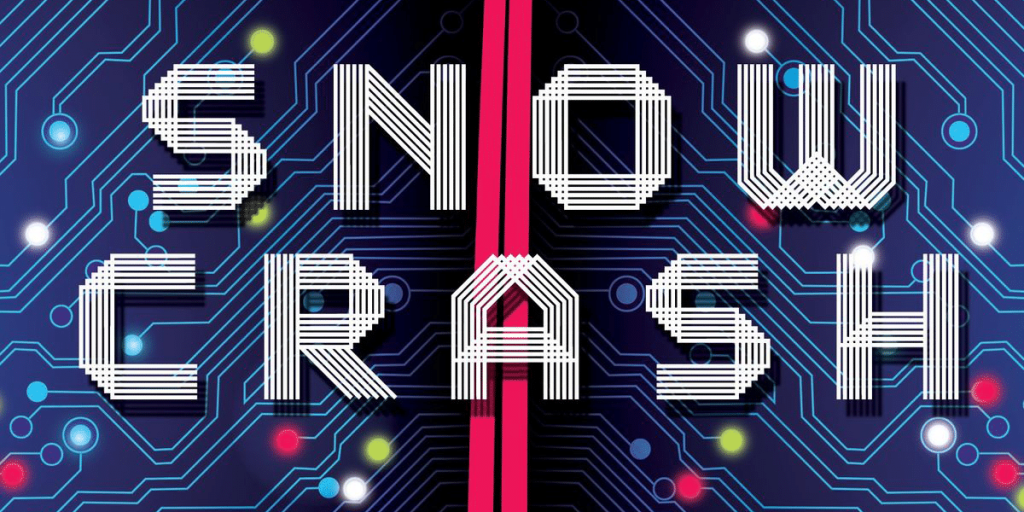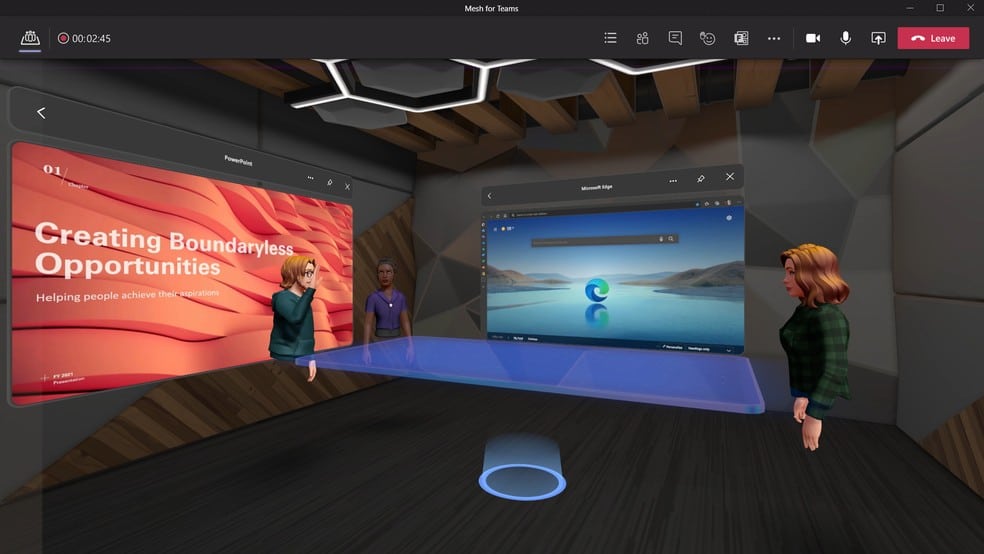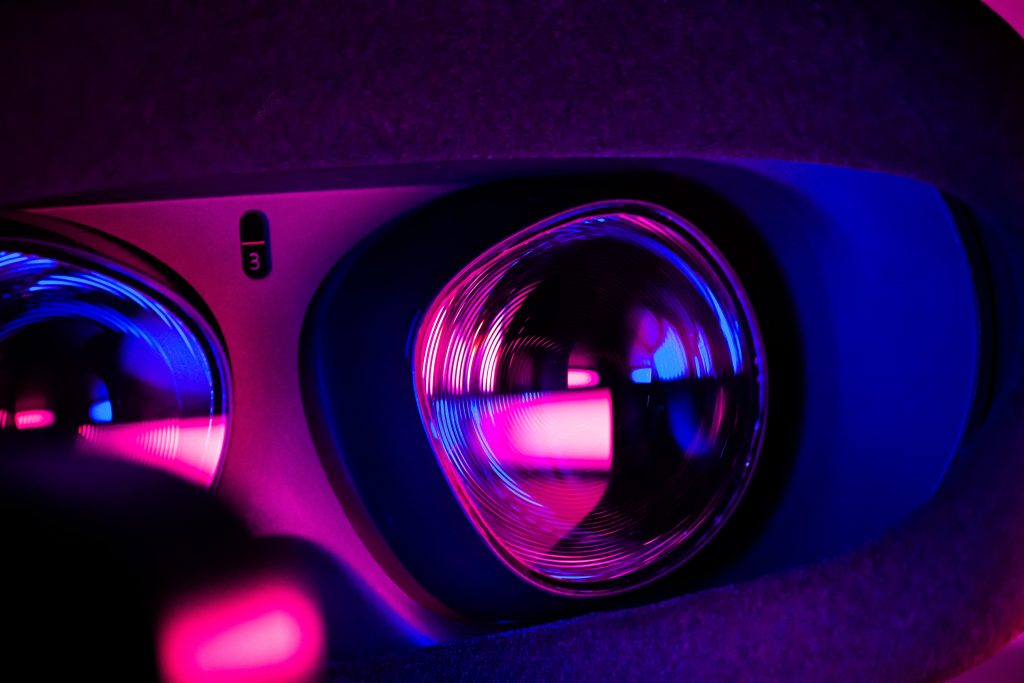What does the Metaverse have to teach us about CX?
P&G, Microsoft, Epic Games (Fortnite), Walmart, and H&M are some of the giants that have joined Mark Zuckerberg’s Metaverse. But, why have these companies decided to join now, and what do these moves tell us about Customer Experience? Read on to find out.
Forget about social networks. From now on, who will claim the piece of digital coexistence space, both in his personal and professional life, will be doing it on the Metaverse.
The expectation is that Meta’s solution will be able, in a future that is far from dystopian, to even emulate sensations, completely redefining what a digital experience is. A place of possibilities.
The Metaverse is not yet complete. It’s under construction, as every digital solution or technology intrinsically is. What we mean is that today’s Metaverse is pretty different from the Metaverse that Mark Zuckerberg is promising us, from what it is destined to be.
Yes, destined: Because Zuck bets on exponentiality, which means the Metaverse will keep changing and pivoting according to the ever expanding evolution of technology. There’s no way back from this point.
Read our full article and find out where the Metaverse is headed, what the brand movements we have already seen mean and what are the prospects for this new technology.
First of all, what is the Metaverse all about?
At the end of October 2021, Mark Zuckerberg went public to share his new endeavor: world domination. This time, in a different way. A virtual world domination.
Facebook was now Meta, representing a whole focus shift in the company. A transition from social network logic to the metaverse. According to Zuckerberg, former Facebook CEO and now Meta’s chairman, the Metaverse will be “the next generation of the Internet.”
The etymology of the word Meta comes from Greek and means “beyond”. The first occurrence of the term “metaverse” is in Snow Crash, a sci-fi book written by Neal Stephenson released in 1992.

Back to the present, Facebook became Meta to (guess what?) go far. We are seriously talking about a Digital Twin, full of Virtual Reality and Holograms. But we are still aways from this being a reality.
In other words, we can define the Metaverse as a kind of parallel reality, which integrates the real and virtual world, using technologies such as Augmented Reality (AR). So yes, we will still rely on some familiar gadgets to access 3D Internet, tools like VR goggles, helmets and headphones.
In practice, the Metaverse transforms the Internet experience from 2D to 3D. It allows the physical experience to be recreated in the virtual environment, creating interactions that are both online and offline — a feature that actually already works very well in games, by the way.
Hits like Fortnite, for example, give us clues to what these relationships will look like. Recently, singer Ariana Grande held a virtual show with her avatar for about 1 million people inside the game.

Which companies are already there? And why?
According to Bloomberg Intelligence, Metaverse is expected to represent a US$ 800 billion (R$ 4.5 trillion) market in 2024, driven mainly by games and events held in this new layer of reality.
Creating new interactive digital experiences that bring together more and more new technological elements to promote fully immersive environments is the motto of Metaverse.
Is it possible to do this today? Not really, not for a while. Companies are mostly using gamified platforms and 360 videos instead of VR and AR for obvious reasons — which are relatively simple, but not simplistic. But the idea is seductive enough to drag large companies into the center of the Metaverse discussion and secure their place at the forefront of innovation in the “next big thing” in the market.
P&G Beauty Sphere

P&G has already debuted in the Metaverse, for example, with an immersive digital narrative about sustainability and products from the brand’s beauty portfolio.
Inspired by generating connections with the customers, the tool was presented to the public at the Consumer Electronics Show (CES), launched under the concept of “Responsible Beauty”.
P&G’s Beauty Sphere is a 3D dynamic experience, centered in a 360 video. Inside it, people are conducted by Katie Piper, philanthropist and Pantene’s ambassador to virtually visit the Royal Botanic Garden, institute leader in vegetal science.
At the end of the Herbal Essence experience, the users find out that P&G will be helping to reforest a native ecosystem preserved area in Veracruz, Mexico.
The experience can be accessed from any device, at beautysphere.com. Take a look at what BeautySphere has to offer.
Microsoft Mesh: here can be anywhere

Distance collaboration holograms. That’s how we can define Microsoft Mesh, the brand-new product of Microsoft’s application family, one of the toppings of Microsoft’s Metaverse. Yes, you didn’t get it wrong, Metaverse is not only a Zuckerberg’s Domain. Not entirely anyway.
Do you remember Ariana’s Grande show in Fortnite into the Meta’s Metaverse (no pun intended)? Well, that was one of the biggest representations of what we can truly extract from metaverses today. And that was put together by a gaming company.
Surely it isn’t a coincidence that Microsoft purchased Activision Blizzard for nearly US$ 70 billion. But let’s get back to the main topic.
With the “Here can be anywhere” motto, Microsoft aims to provide shared mixed reality experiences. We are probably witnessing a whole divided metaworld, between Microsoft and Facebook. Yes, Microsoft has its own plans for Metaverse-based technology, including facilitating the performance of surgeries through HoloLens.
But, it seems, everything will start with the replacement of cameras by avatars, something that for many of us, slipped under the radar, but that we shouldn’t underestimate.
H&M’s Store in Metaverse (or non-store)
A rumor that was recently on top of media discussions was that H&M was in talks to open an experience store in Metaverse. Well, maybe calling this section, H&M’s non-store would be more appropriate. We explain.
A video released by CEEK’s Twitter, an India Virtual Reality company, showed a concept of H&M branded. That was sufficient enough to start running rumors that Hennes & Mauritz AB (H&M, just to vary a little bit) would be offering a 3D shopping experience in Metaverse for the audience. Here’s the video.
But as soon as the “hoax” got spread, a series of articles popped up on the Internet saying that an H&M spokesperson, whose identity was not revealed, denied that the company is interested in joining Zuckerberg’s newborn for a while.
H&M also added, actually, they aren’t even collaborating with CEEK – later confirmed on their official Twitter page.
According to Fashion United, in CEEK’s words, the video is about a concept that was presented to the Swedish retailer. In other words, talks are true, but nothing is yert material. It seems people are already creating alternative realities.
“We are currently in talks with people at H&M to make this a reality, but at the moment it is not yet.”
Walmart is also preparing for Metaverse
Walmart has started, timidly, preparing for Metaverse, at least according to CNBC verifications.
Recently, the debate around the Walmart plans for Meta proposition heated up due to an exclusive article on the channel that revealed that on December, 30th, Walmart submitted to register, among other things, a cryptocurrency, an NFT platform, Blockchain applications, and a token management software in the U.S. Patent and Trademark Office.
Also according to CNBC, in total, seven separate applications have been submitted.
Walmart does not deny the information, but is keeping things “under wraps”. On an official note, they say they are going to continuously explore emerging technologies that may shape the future of the retail sector”. Yes, we believe it.
But our highlights are not alone: other major brands, such as Nike, Adidas, Balenciaga, Zara, and Gap have also announced their first steps into the Metaverse lately.
What is the motivation of the early adopters?
It’s no secret that Metaverse-related efforts are in their early stages. In most companies, the speech adopted is one of preparation.
Projects targeting this new consumer reality are designed to reach the “state of the art” 10 or 15 years from now, when the adhesion to the project should reach its initial majority.
For now, a good part of the strategies of early adopters has been to “occupy the virtual space” craving for some competitive advantage. It is also a chance to first explore it, then learn and clarify the objectives.
But it seems that Metaverse won’t be a finish line. As long as technology evolves, as does the Metaverse, and so the experiences. And that time vacuum is exactly the opportunity for the underdogs to challenge the status quo (nothing new, we saw what technology did to Kodak, Blockbuster and others).
We can say that, today, most of the companies don’t know exactly where they’re going, regarding Metaverse, because the Metaverse itself is quite unpredictable — which does not mean they don’t know how to create gamified dynamic experiences.
It’s possible to imagine ways, but not materialize them at full potential yet. But how to do that? Well, it will depend on the evolution of some technologies, such as Virtual Reality, which will pave the way for the Metaverse.
But, when will the Metaverse actually reach the levels of interactivity to definitively change Customer Experience? Well, that will depend on the pace of evolution of 3 essential technologies for the development of the world that Mark Zuckerberg imagines.
3 essential technologies in the future of CX in Metaverse
Do you remember the concept of digital twins?
A digital twin is a digital version of a real object. It replaces physical prototypes, replicating them identically on digital, with all their attributes. It works as a detailed simulation of objects or performance models.
The idea is that the digital twin serves as a real-time digital counterpart of a physical object or process. We are talking about interacting with the virtual and altering the real.
But wait, what does that have to do with the Metaverse? More than you imagine actually. Check out which technologies will facilitate our immersive experiences in the Metaverse below:
1. Virtual Reality (VR)
Virtual Reality is considered an immersive technology. It works by including the user in a fully virtual environment, created through computer graphics or 360º video. The goal is to provide a sensory experience in a simulated environment through visual, sound, and tactile stimuli, among others. They usually need a prop, like the famous VR glasses.
Note: Virtual Reality, as we know it today, is considered the first stage of the Metaverse.
2. Augmented Reality (AR)
Augmented Reality consists of the integration of digital elements in the physical environment, usually through software and the camera application of smartphones and tablets. It aims to broaden the understanding of a given context, providing the user with relevant information about it.
3. Mixed Reality (MR) & Holography
Mixed Reality works at the intersection (the so-called spectrum) between the physical and virtual worlds. So it is directly related to Virtual and Augmented Reality, but not only that. It differs from the other two through the use of holographic technology.
The results we have today with MR are usually achieved by adding holographic technologies to Augmented Reality, but the technology still needs to enter the exponential curve to reach its full potential.

→ Are you really into the topic? Read more about Virtual, Augmented and Mixed Realities here.
But that is not all.
In addition to the technologies mentioned above, it is quite reasonable to think that 5G, Blockchain, NFTs (non-fungible tokens), and cryptocurrencies will also have their share of shine in the Metaverse.
However, Zuckerberg’s Metaverse bets on the exponentiality of technology. This means that most likely “the next big thing” in technology will be incorporated in Metaverse, completely changing the way experiences happen.
For this reason, the levels of experience that we have available in the Metaverse today are a fraction of what we will be able to do in the future, making it impossible to say exactly what the Metaverse will actually be in ten — or even five — years from now.
Why should you care about it?
If there’s nothing yet consistently happening, towards transforming our interactions, why should a company care?
Unsurprisingly, experts are already pointing to the Metaverse as a trend that will dictate the future of the internet as a whole. According to the perspective, in a few years, we will experience a much more immersive virtual world, through which we will interact, study, work and consume. All through avatars.
For companies, the Metaverse could represent a complete shift in businesses towards an experience-first way of doing things (it may seem like an old story, but this is not what happens today in practice).
Through it, brands will be able, for example, to tell extensive, interactive, and emotional stories, generating more real connections and promoting an even more significant impact on the user experience.
In short, this new technological leap promises to make it easier for users to connect, improving the experience and interaction with brands.
These and other possibilities that the metaverse offers to companies, especially with regard to the ability to strengthen their services, are among the main reasons that have led big brands to invest on this front.
→ Plan your track to the future
As you can see, the future can be unpredictable and a little bit messy. As important as joining macro trends at the beginning of a trend curve is to plan your development path and comprehend future unfoldings.
And, modesty aside, we’re good at it. Thinking about investing in Metaverse and wanting to deepen your understanding of how this market move will impact your sector? Talk to one of our consultants.
We’ll be happy to help you analyze your perspective and introduce our methodology of scenario planning, based on risk management, antifragility, and anticipatory innovation. Remember: you don’t have to go it alone.
A Final Word About Metaverse’s CX
When we say that Mark Zuckerberg is “betting” on the Metaverse, it’s just another way of saying “investing“.
According to information presented in a report released in the last quarter of 2021, Meta (Facebook at that time) is expected to invest US$ 10 billion into their apps, including former Facebook Reality Labs (FRL)’s, their hardware VR unit.
In the report, the company further stated that it is committed to “bringing this long-term vision to life” and hopes to further increase investment in the Metaverse in the coming years.
Translating technical jargon, what Mark Zuckerberg is hoping for is a complete restructuring of what is possible to do with VR and AR, aiming at Mixed Reality (MR). And the faster these advances, the more the limitless Metaverse will be capable of providing extraordinary experiences, collaborations and ways of communicating.
We dare not here estimate how long it will take the Metaverse to reach (or whether it will, and not a competitor, reach) its maximum potential — or even how we are going to behave in front of them, since we will start to experience emulated sensations.
But we can say that, as much as everything we’re talking about has already been imagined, it’s impossible to understand the limits of a Metaverse full of Digital Twins and Mixed Reality, because you can’t use today’s metrics to analyze it.
Lastly, the Metaverse is an environment that will be extremely changeable, that will actively build and discover itself day by day, at the same rate as technology advances. What we can certainly expect is that this digital multiverse will give us a lot to talk about, with real potential to disrupt the internet as we know it and leave a lasting business legacy. Stay tuned.

Click on the image and get your copy now.
